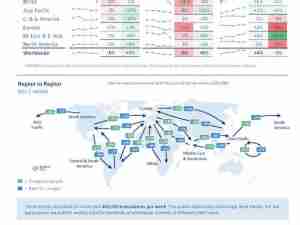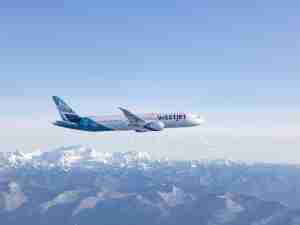

The level of for-hire freight shipments in August measured by the Freight TSI (140.6) reached its all-time high. BTS’ TSI records begin in 2000.
The July index was revised to 138.7 from 139.0 in last month’s release. The June index was revised up slightly.
The Freight TSI measures the month-to-month changes in for-hire freight shipments by mode of transportation in tons and ton-miles, which are combined into one index. The index measures the output of the for-hire freight transportation industry and consists of data from for-hire trucking, rail, inland waterways, pipelines and air freight. The TSI is seasonally-adjusted to remove regular seasons from month-to-month comparisons.
Analysis: The August Freight TSI increase was broad based, with increases in all sectors except the rail components – carloads and intermodal. The TSI increase took place against a background of mixed results for other indicators. The Federal Reserve Board Industrial Production Index grew in August, with increases in mining, manufacturing and utilities. Personal income increased by 0.4%, while housing starts grew by 12.3%. The Institute for Supply Management Manufacturing index decreased 2.1 points to 49.1, indicating contraction in the manufacturing sector.
Trend: The August increase of 1.4% brought TSI to a record high level. The August increase followed an increase in July, leaving TSI 2.0 % over its June level, and 1.3% over its previous record high in November 2018. The record high level was reached even though the index grew in only five of the nine months since November. From a low point in March 2016, the index climbed 12.8% until reaching a new high in May 2018. From that point, the index has exceeded its levels in all months prior to May 2018. The July 2019 index was 48.3% above the April 2009 low during the most recent recession.
Index highs and lows: For-hire freight shipments in August 2019 (140.6) were 48.3% higher than the low in April 2009 during the recession (94.8). The August 2019 level reached its all-time high.
Year-to-date: For-hire freight shipments measured by the index were up 3.2% in August compared to the end of 2018.
Long-term trend: For-hire freight shipments are up 16.3% in the five years from August 2014 and are up 41.7% in the 10 years from August 2009.
Same month of previous year: August 2019 for-hire freight shipments were up 4.1% from August 2018.
The TSI has three seasonally-adjusted indexes that measure changes from the monthly average of the base year of 2000. The three indexes are freight shipments, passenger travel and a combined measure that merges the freight and passenger indexes. See Seasonally-Adjusted Transportation Data for numbers for individual modes. TSI includes data from 2000 to the present. Release of the September 2019 index is scheduled for Nov. 14.
Passenger Index: The TSI for passengers rose 0.1% in August from its July level. The Passenger TSI August 2019 level of 134.6 was 2.7% above the August 2018 level. The index is up 12.0% in five years and up 22.7% in 10 years. The passenger TSI measures the month-to-month changes in travel that involves the services of the for-hire passenger transportation sector. The seasonally-adjusted index consists of data from air, local transit and intercity rail.
Combined Index: The combined freight and passenger TSI rose 1.0% in August from its July level. The combined TSI August 2019 level of 138.7 was 3.7% above the August 2018 level. The combined index is up 14.8% in five years and up 35.4% in 10 years. The combined TSI merges the freight and passenger indexes into a single index.
Revisions: Monthly data has changed from previous releases due to the use of concurrent seasonal analysis, which results in seasonal analysis factors changing as each month’s data are added.
BTS research has shown a clear relationship between economic cycles and the Freight and Passenger Transportation Services Indexes. See a study of this relationship using smoothed and detrended TSI data. Researchers who wish to compare TSI over time with other economic indicators, can use the FRED database, which includes freight, passenger and combined TSI, and which makes it possible to easily graph TSI alongside the other series in that database.








